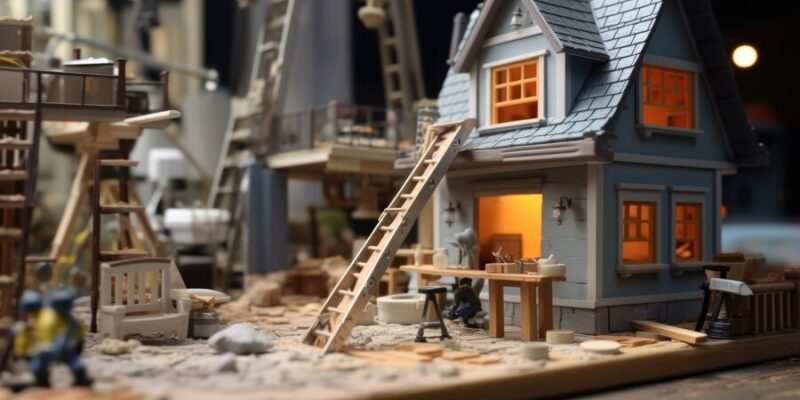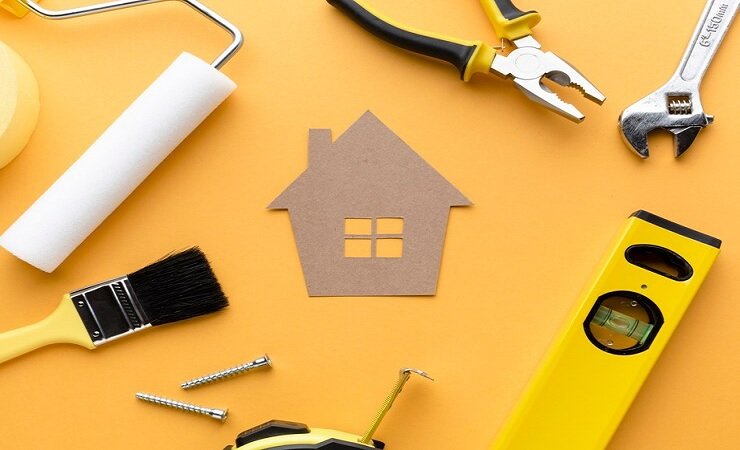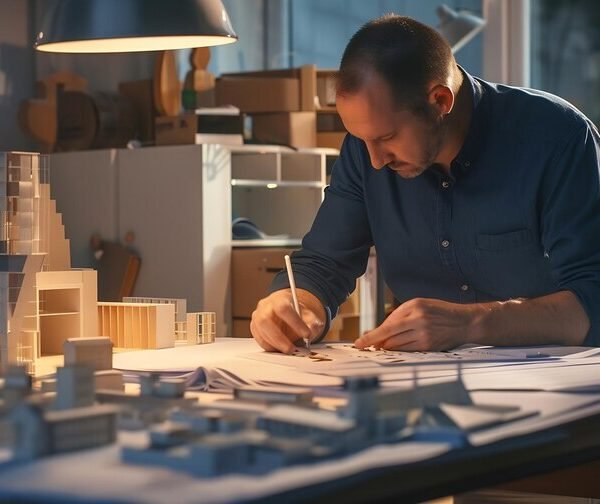How to Create a Home Improvement Budget for a Small Budget
You’re lounging on the couch, remote in hand, when a scene from one of those delicious home renovation shows pops up. Suddenly, you find yourself drooling over those gleaming new countertops and dreaming of a kitchen remodel. But just as quickly as those visions of grandeur appear, reality strikes – your bank account whispers, “Yeah, right!”
Don’t let a small budget dash your dreams of upgrading your living space! With some savvy planning and a touch of resourcefulness, you can totally achieve those home improvement goals without breaking the bank.
Creating a home improvement budget for a small budget requires careful planning, prioritization, and resourcefulness, and this article will provide practical tips and strategies for achieving your home improvement goals without emptying your wallet.
Key Takeaways
- Understand your complete financial picture before diving into any projects
- Prioritize the upgrades that will have the biggest impact on safety, value and functionality
- Get realistic cost estimates by researching prices and getting multiple quotes
- Stay on track by creating a detailed budget plan and tracking every expense
- Get scrappy and resourceful to keep costs down without sacrificing quality
Intrigued? Let’s dive into the nitty-gritty of budgeting for those dream home improvements!
Understanding Your Budget
Listen, before you even think about knocking down a wall or ripping up floors, you need to get crystal clear on your financial situation. Home renovations have a sneaky way of hemorrhaging cash if you’re not careful.
Start by laying out all your income sources and fixed monthly expenses like your mortgage, utilities, car payments, etc. With what’s left over, determine how much you can realistically allocate towards home improvement projects each month without going broke.
Don’t just consider the upfront costs either – factor in things like:
- Ongoing maintenance and repair costs for new installations
- Increased utility bills from appliance upgrades or additions
- Homeowners insurance and property tax increases after renovations
It’s easy to forget about these extra expenses when you’re caught up in renovation fantasies. Trust me, getting hit with surprise costs can put a serious damper on your newly remodeled kitchen bliss.
Once you’ve mapped out a reasonable monthly renovation budget, stick to it religiously. It’ll be tempting to splurge on those gorgeous Brazilian cherry floors, but every cent over budget is a cent towards future financial stress.
Understanding Your Budget
Before you even think about picking up a hammer or a paintbrush, it’s crucial to have a clear understanding of your budget. Home renovations can quickly spiral out of control if you don’t have a firm grasp on your finances. Start by assessing your income, expenses, and financial goals.
Be realistic about how much you can comfortably allocate towards home improvement projects without compromising your other financial obligations. Factor in unexpected expenses and contingencies, because let’s be honest, there’s always something that pops up during a renovation.
Once you’ve determined your budget, stick to it like glue. It’s tempting to splurge on that fancy tile or high-end fixture, but remember, every dollar counts when you’re working with a small budget.
Prioritizing Your Projects
Not all home improvement projects are created equal. Some are essential for safety and functionality, while others are more cosmetic. Prioritizing your projects based on their urgency and impact is key to maximizing your budget.
- Repairs and Maintenance Start with any necessary repairs or maintenance issues. A leaky roof or outdated electrical system can quickly turn into a costly nightmare if left unaddressed.
- Safety and Functionality Next, tackle projects that improve the safety and functionality of your home. This could include installing new smoke detectors, upgrading outdated appliances, or fixing that creaky staircase.
- Upgrades and Improvements Once you’ve addressed the essentials, you can focus on upgrades and improvements that add value and appeal to your home. This could include kitchen or bathroom remodels, new flooring, or fresh paint.
Remember, not every project has to be tackled at once. Prioritize based on your budget and needs, and tackle projects as funds become available.
Estimating Costs
Accurately estimating the costs of your home improvement projects is crucial to staying within your budget. There are several factors to consider, including materials, labor, and permits.
- Materials Research the cost of materials for your project. Look online, visit home improvement stores, and compare prices. Don’t forget to factor in delivery costs and any necessary tools or equipment.
- Labor If you’re hiring contractors or professionals, get multiple quotes and compare rates. Don’t be afraid to negotiate or ask about discounts for bundling multiple projects.
- Permits Depending on the scope of your project, you may need to obtain permits from your local municipality. These costs can add up quickly, so be sure to factor them into your budget.
- Contingency Fund No matter how well you plan, there’s always a chance for unexpected expenses. Set aside a contingency fund, typically 10-20% of your total budget, to cover any unforeseen costs or overruns.
By accurately estimating costs upfront, you can avoid unpleasant surprises and stay on track with your budget.
Managing Your Budget
Even with the best-laid plans, it’s easy for a home improvement budget to spiral out of control. Effective budget management is key to staying on track and avoiding financial stress.
- Create a Budget Plan Before you start any work, create a detailed budget plan that outlines your projects, estimated costs, and timelines. This will help you stay organized and focused.
- Track Expenses As you move through your projects, diligently track your expenses. Use a spreadsheet, app, or good old-fashioned notebook to keep a record of every penny spent.
- Prioritize Spending If you find yourself running low on funds, prioritize your spending based on the urgency and impact of each project. Be willing to adjust your plans or scale back if necessary.
- Avoid Impulse Purchases It’s easy to get caught up in the excitement of a home improvement project and make impulse purchases. But those little extras can quickly add up and bust your budget. Stick to your plan and resist the temptation to splurge.
- Set Aside a Contingency Fund As mentioned earlier, setting aside a contingency fund can be a lifesaver when unexpected expenses arise. Aim for 10-20% of your total budget to cover any unforeseen costs.
By managing your budget effectively, you can stay in control of your home improvement projects and avoid the stress of overspending.
Conclusion
Transforming your living space doesn’t have to mean taking out a second mortgage. With careful planning, prioritization, and budget management, you can achieve your desired home improvements without breaking the bank.
Remember, the key is to understand your budget, prioritize your projects, accurately estimate costs, and manage your spending effectively. By following these strategies, you can create the home of your dreams while staying within your financial means.
So, what are you waiting for? Roll up your sleeves, grab that paint roller, and get ready to give your home the fresh, new look it deserves – all without emptying your wallet!










